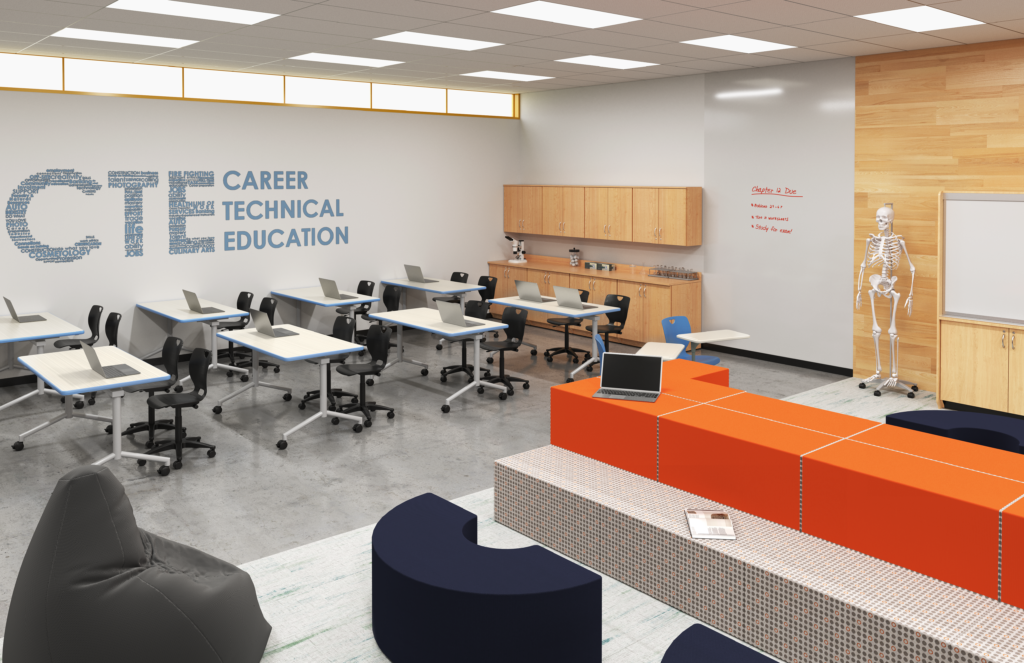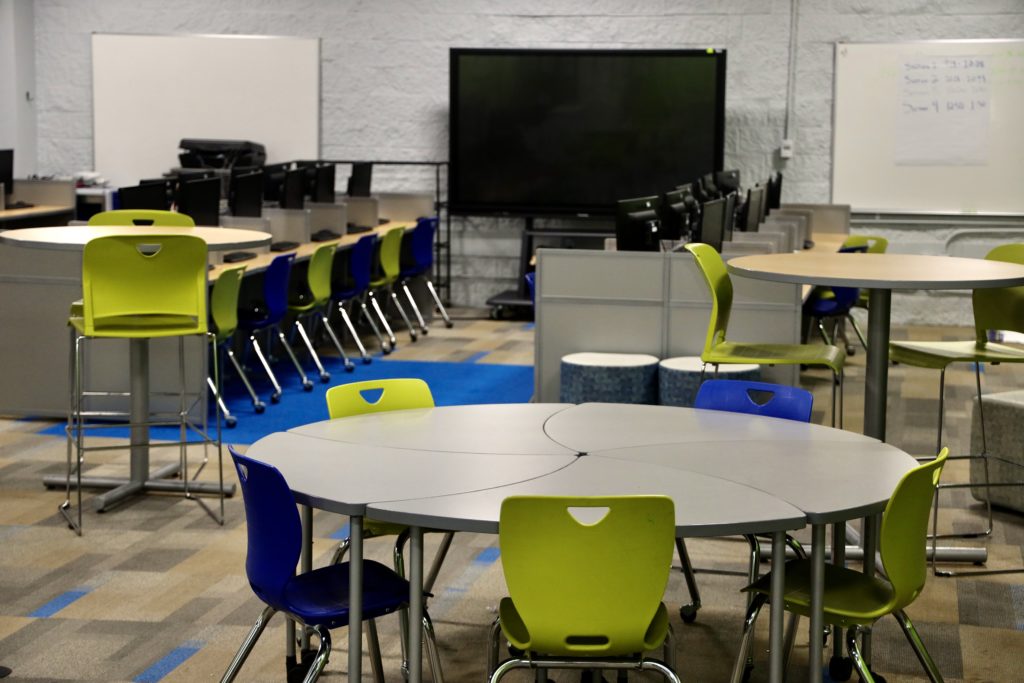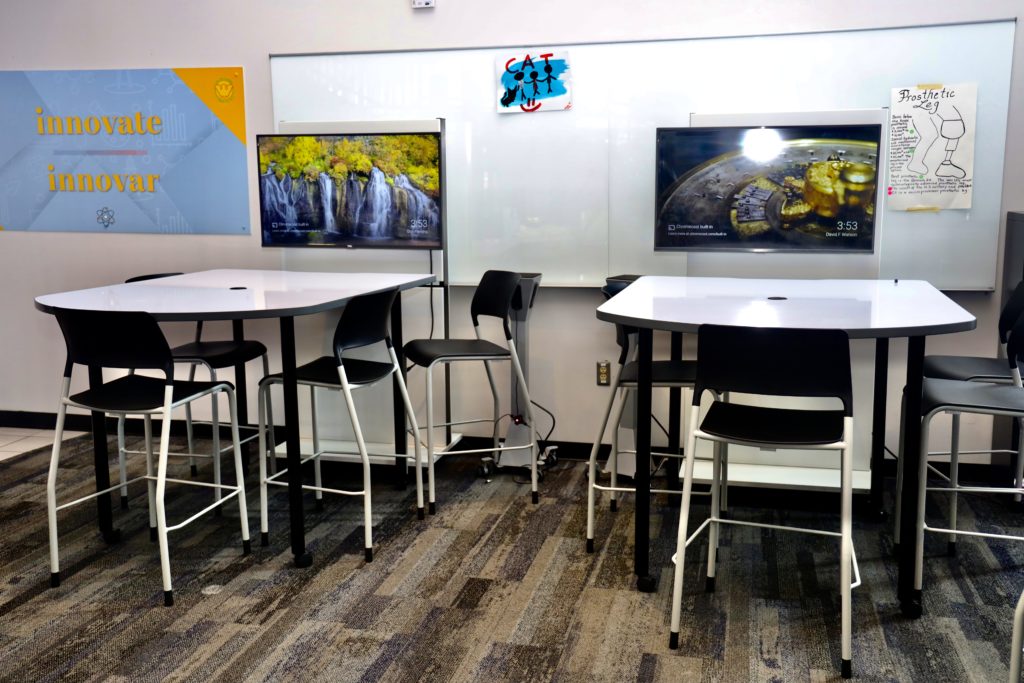The career and technical education (CTE) that students experience today is very different from the old vocational model of a generation ago. Modern CTE is about preparing students for both college and a high-demand career in rapidly evolving fields such as medical science, IT or industrial technology while still providing a path for students who do not want to pursue college. This requires not only cutting-edge tools and curriculum, but also future-ready learning environments that are equipped for student success.
About 80 percent of high school students earn at least one CTE credit before graduating, and CTE is growing in importance. This isn’t surprising, given the benefits that studies have attributed to CTE instruction.

For instance, did you know that students are more likely to graduate on time and less likely to drop out of school if they engage in CTE courses? One reason is that CTE helps students understand how the content they’re learning in their classes relates to their future success. As a result, students are less likely to disengage from school.
There is also evidence to suggest that students who take part in CTE instruction go on to college at a higher rate and have a higher earning potential than their peers who don’t.
Effective CTE programs share many characteristics: They help students learn within the context of real-world projects and scenarios. They highlight the connection between academic and technical knowledge. They incorporate modern equipment, technology and materials regularly used within a career field. They teach not just technical skills, but also important life skills needed for 21st century success, such as creative problem solving, collaboration and critical thinking.
To support student success, modern CTE learning spaces must be carefully designed and equipped. Here are four keys to designing future-ready CTE classrooms that effectively enable high-quality instruction.
Begin with your learning goals in mind
When designing CTE classrooms, think about what you want students to learn and be able to do. The required skills for each career pathway will help you determine your instructional goals for a CTE course, and those goals in turn will shape and inform the design of the learning space.
When designing CTE classrooms, think about what you want students to learn and be able to do.
For example, an architecture or engineering studio might have one area where students research and plan their ideas, equipped with mobile devices, whiteboards and other brainstorming tools; a separate area for designing and prototyping, with high-powered computers for running CAD software and work surfaces and materials for constructing; and perhaps a third area for presenting ideas and sharing finished products, equipped with a digital projector and/or a large-screen monitor.
Consult with industry experts
Talk with employers, professional organizations and other industry experts as you plan your needs and goals. Find out what equipment and technologies students should be using to learn the skills they’ll need to succeed in that career. Look to modern workspaces for inspiration as well: What does a typical office, lab space or other work environment look like in that field?

Provide opportunities for hands-on learning
High-quality CTE is characterized by active, hands-on learning, in which students complete authentic, real-world tasks and projects. In the process, they learn not only important career skills but also 21st century skills that are essential in any workplace environment, such as the “four Cs”: communication, collaboration, creativity and critical thinking.
For CTE environments to support hands-on learning, students will need plenty of space to move around and work safely. They’ll need areas to store their tools and equipment. They’ll need power, connectivity and whatever other infrastructure is required to support the technologies they’re using. Think about factors such as power, storage and safety when designing CTE classrooms.
Design with flexibility in mind

Workplace standards and equipment change rapidly as technology evolves. When you’re designing CTE learning spaces, think about how you can make these spaces as flexible and adaptable to changing circumstances as possible.
For example, use room dividers and/or strategically placed furniture to define learning spaces in ways that can be changed easily as necessary. Take advantage of movable furniture that can be arranged quickly into different configurations. Consider adding a “teachable moment” area in a non-traditional way, such as in the corner of an automotive lab.
Preparing students for their future
A modern CTE learning environment that is thoughtfully designed, furnished and equipped can enhance CTE programs and effectively prepare students for a variety of careers. By following this advice, you can design future-ready CTE classrooms that successfully facilitate high-quality instruction.

